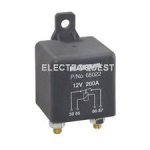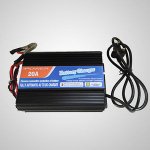ObanBoy, I am struggling to understand your comments about
battery chargers being measured in the regions of 100's of Amps.
Are you talking about
solar charge regulators or mains
battery chargers?
For
solar regulators it is all to do with the maximum current that the charger can handle, and is normally 10, 20 or 30 Amps. You can calculate (or read the instruction manual if you have one) the maximum number of Watts the
solar panel array can be for the amount of Amps your regulator can handle.
For mains
battery chargers I have only ever seen them listed in relation to their power, i.e. in Watts - normally 150W, 200W, 300W, etc.
It doesn't matter how many AHrs your leisure
battery bank is your regulator or charger will still work, regardless of its size (in terms of power). The only effect of a higher power charger is that it will put the Amps into the
battery bank quicker. Think about it, from the
solar panels on my van's roof, on a bright sunny day, I can get over 10A going into my batteries. However, on a dull, miserable day I could be getting only 1A or 2A going into the batteries. The batteries are still getting charged but it will take a lot longer to put back in the same number of Amps that have been taken out of the batteries through normal use. The same applies for a mains charger, a 150W charger will still charge your batteries compared to a 300W charger, but will take twice as long to do it.




